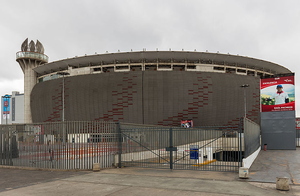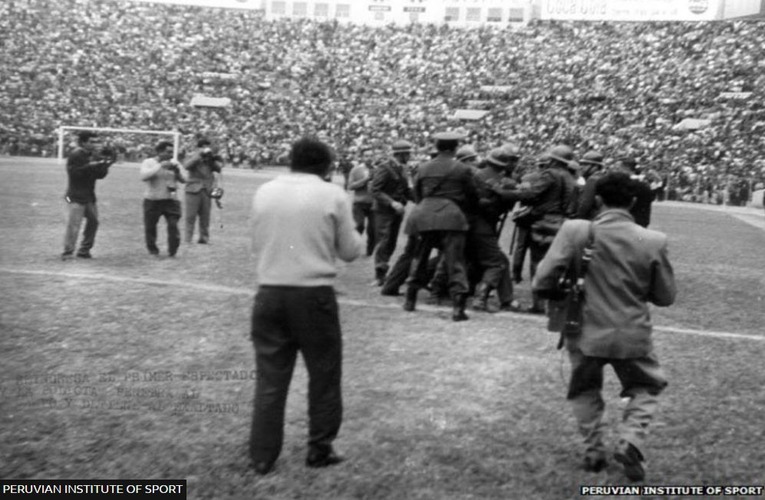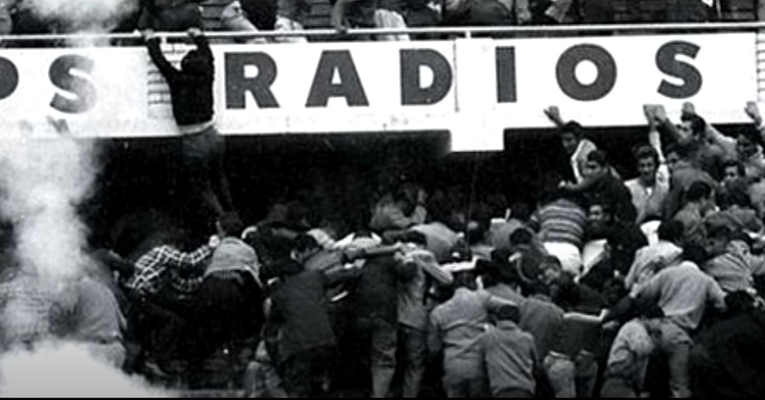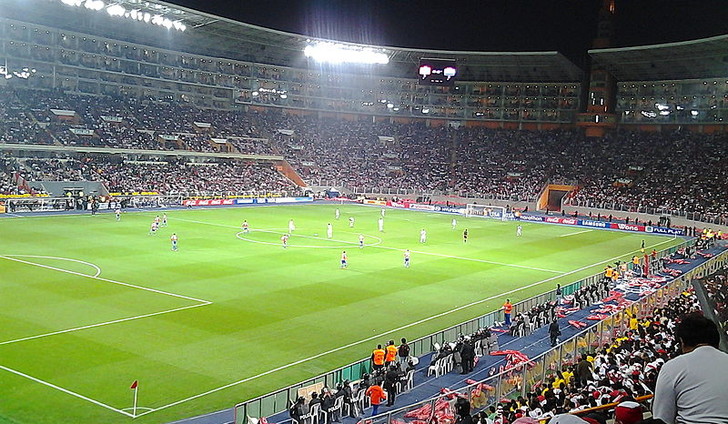
Sadly known as the worst stadium disaster in the history of football, the Estadio Nacional Disaster, also known as the Lima Disaster, occurred on the 24th of May in 1964.
It’s dual name comes from the fact that that it occurred in Peru’s national stadium, known as the Estadio Nacional, which was located in the city of Lima.
Here we’ll have a look at the disaster itself, exploring the build-up and what happened as well as the aftermath of its occurrence. 328 people lost their lives, with about 500 others injured seriously but non-fatally.
No other football disaster has come close to having such tragic results.
The Build-Up

The match was a qualifying game for the football tournament of the Summer Olympics that was due to be held in Tokyo later that year. Peru were second in the table of the South American teams before the game, which took place at about the halfway stage of the qualifying period. There were only two matches left of which the game against Argentina was one.
The Peruvians were confident that they could make it through and qualify for the Olympics, but the all conquering Brazilians were the final side that they would have to go up against. That meant that at least a draw against Argentina was needed to put them in the best possible position to make their way to Tokyo.
53,000 people were welcomed into the stadium to watch that game. That was a little more than 5% of the entire population of Lima. Despite the raucous crowd getting behind the home team it was Argentina who took the lead. They then went into defensive mode, welcoming the Peruvian attack and dealing with every wave.
With six minutes left of normal time one of Argentina’s defenders went to clear the ball but Peru’s Kilo Lobaton raised his foot to block the clearance. The ball ended up in the back of the net but the match referee, a Uruguayan named Ángel Eduardo Pazos, declared it to be a foul and disallowed the goal.
The home crowd, realising the importance of the result and the significance of the referee’s decision, were not impressed. A local bouncer, known as Bomba, ran onto the pitch and attempted to punch the referee before being stopped by police and removed from the field of play. Another home fan called Edilberto Cuenca also ran onto the pitch to express his disappointment with the referee’s decision.
The Disaster

Cuenca was then attacked by the police and brutally assaulted. The officers, who were themselves from Lima, began kicking him and beating him, with dogs tearing at his clothes. This incensed the crowd who couldn’t believe that police were doing this to one of their own.
The crowd began to launch missiles at the officers on the pitch and some tried to get onto the playing surface. Those less inclined to engage in violence made attempts to leave the stadium by heading down stairs to an exit gate. However when they got there they discovered that the gate was closed and so they turned back to go back up to into the stand.
At that moment police began to launch tear gas canisters into the ground. That resulted in people from the stands running towards the same tunnel to escape what was happening on pitch side, but they merely ran into those who had already encountered the locked gate. The tear gas canisters were mostly launched into the North Grandstand in the hopes that it would deter further people from running onto the pitch. Instead it caused those in the stand to panic and a mass exodus ensued.
Owing to the fact that the gates at the exits were made of corrugated steel rather the more standard gates used in most football stadiums, they were impossible to break down and those at the bottom of the sets of stairs couldn’t escape the ensuing crush. They were pinned against the shutters with no way of escaping; something that those at the top of the stairway had no idea about.
Eventually the sheer pressure of the bodies pushing up against the shutters caused a number of them to give way on to the streets, but it was too late. Anyone who had stayed inside the stadium managed to avoid death and injury, with all of the lives lost coming from internal haemorrhaging or asphyxia within the tunnels that led out of the stadium.
The Aftermath

The destruction didn’t end once the doors burst open. After they opened those who had survived began to engage in a battle with armed police on the streets. The judge who was appointed to investigate the disaster later ruled that those killed by gunfire wouldn’t be included in the official tally of deaths from the disaster itself. The official number of deaths was 328 but it is likely that it was significantly more than that, with numerous reports of people being killed by gunshot wounds.
Though the official total of deaths may be lower than the actual number of people who died, it is still 38 people more than lost their lives in the Hillsborough Disaster, the Burden Park Disaster, the Bradford Fire Disaster, the Heysel Disaster and the 1971 Ibrox Disaster combined.
The day after the disaster the government declared a seven-day period of mourning for those that had died. National flags were flown at half-mast and all public engagements were cancelled. A decision was also taken to lower the capacity of the Estadio Nacional by roughly 11,000 down to 42,000. It has since been renovated on a number of occasions, most notably in 1992, 1996, 2004 and 2010.
The 2004 renovations were completed so that the stadium could be used to host that years Copa América. The renovations carried out in 2010 were the most major of all, adding 7371 hospitality boxes, over 700 underground car parking spaces, a gourmet restaurant and more. It was hoped that the changes would allow them to host the 2015 Pan American games, though the tournament was eventually held in Toronto.
